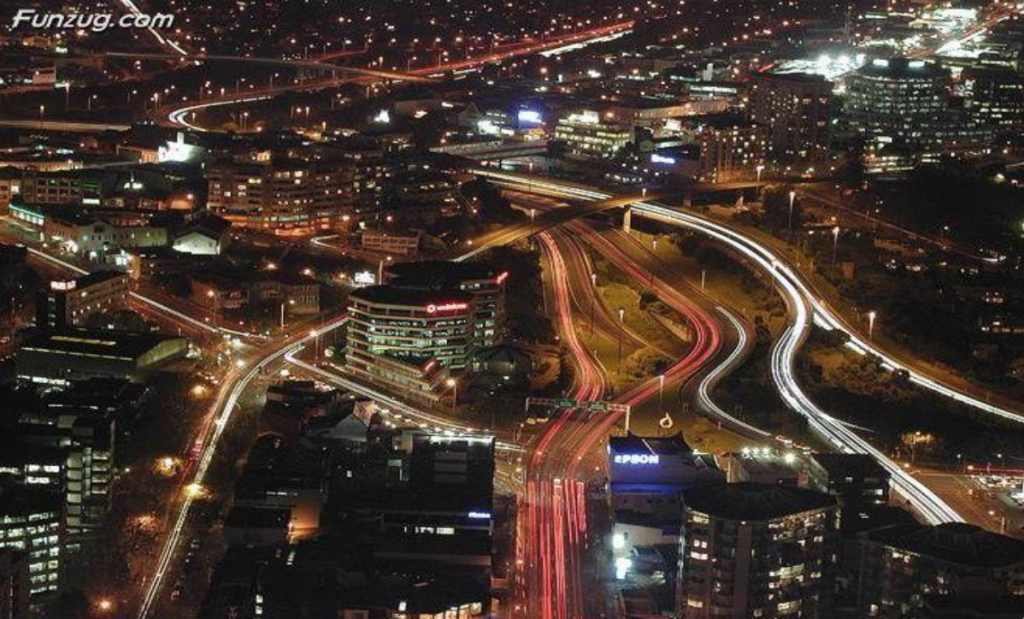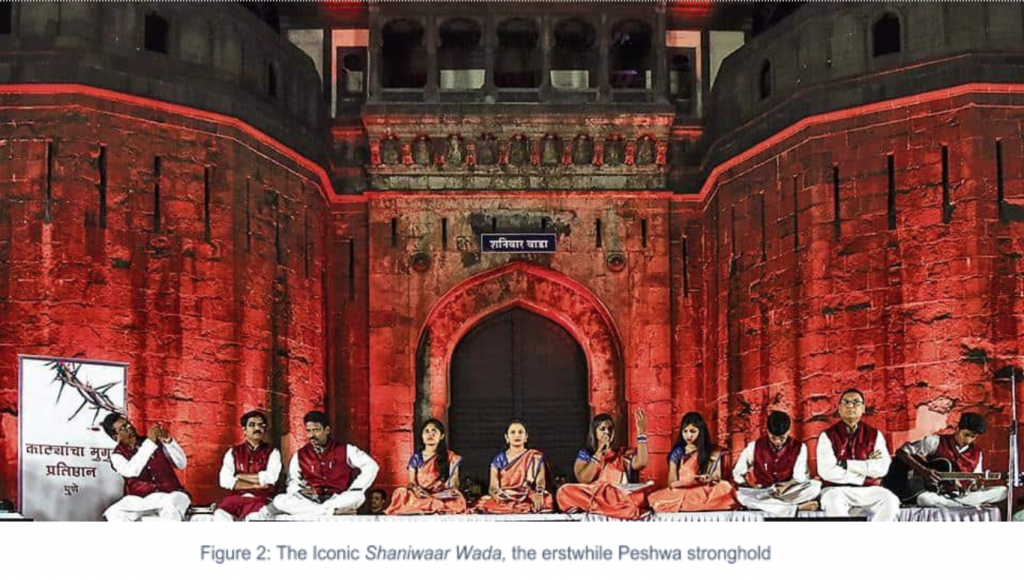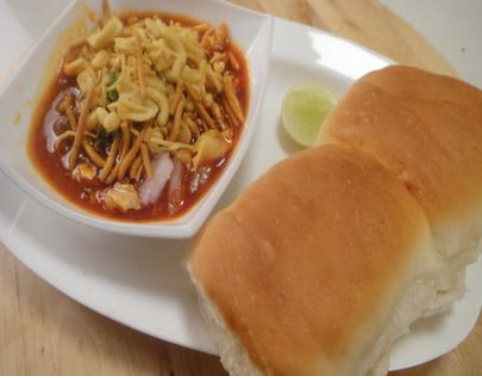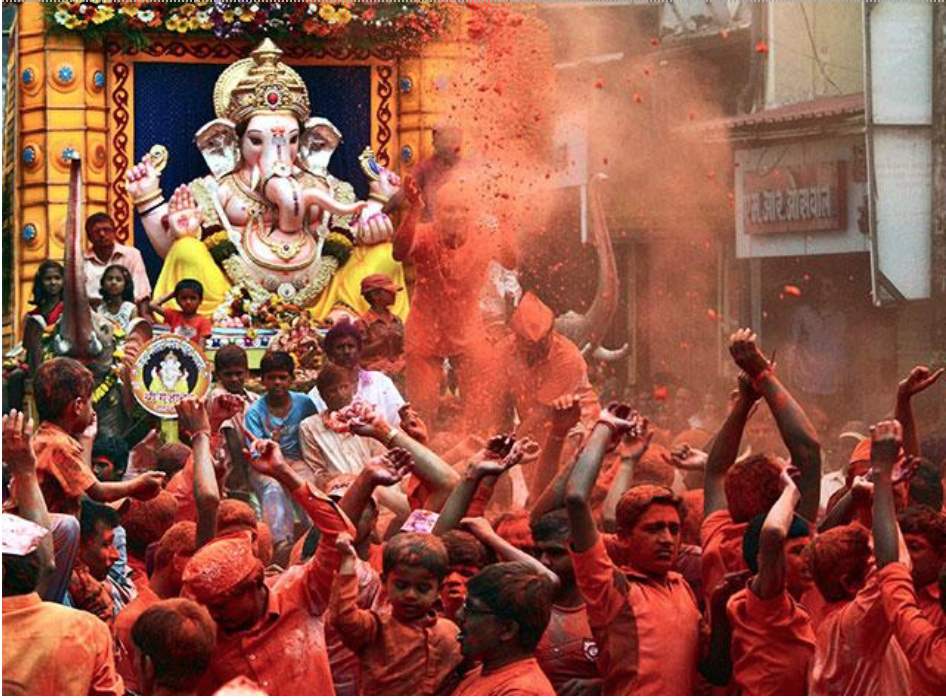January 16, 2019
Abhishek Malavade
Arts freshman Abhishek Malavade provides us a glimpse into his hometown, Pune (India)
As easy as I thought penning this text would be, it has proven to be quite a daunting task, for how can one summarise the multitude of colour, culture and chaos that is Pune? Historically the stronghold of the Peshwas of the Maratha dynasty, Pune has bagged the title of “India’s most livable city” year after year while managing to stay firmly rooted in its royal heritage. The echoes of the Peshwas’ grand processions still resonate in the bustling streets and alleyways of Pune’s iconic city centre, which is conveniently demarcated by seven peths (literally, markets), named after the seven days of the week. Being the second largest centre of the Indian IT revolution, world-class offices and knowledge centres have proliferated the city and now coexist with the sights and sounds of traditional festivals.

Those who find themselves lucky enough to call this place home, know not to miss the weekly farmers markets held in their respective peths, corresponding conveniently to a day of the week. Not surprisingly, Pune is home to several world heritage sites, the most prominent of which is the Shaniwar Wada, which served as the seat of the Peshwas. Other places on your bucket lists should be the Kesari Wada, and the Sinhagad Fort; where the legendary warrior-king Shivaji Maharaj held office.

If medieval forts are not what you fancy, Pune offers greener pastures, quite literally: Just take a stroll through the well manicured lawns and flowerbeds of the Empress Garden, or the walkways of Sambhaji Park. Those hoping to shop for some classic Indian goods in for a treat, for Pune is known for its plethora of fine sarees, handicraft stores and jewellers, some which have been around since the nineteenth century. Laxmi Road and its surrounding areas, located in the heart of the old city, have held their status as the bona fide shopping district for over two centuries now.

As is expected from a city of such grandiose, Pune does not fail to impress when it comes to pleasing one’s taste buds. While the diaspora of people from all parts of India have also brought along with them, their respective tastes, Pune is best known for its range of Maharashtrian (hailing from the state of Maharashtra) delicacies, one among them being the missal pav. Something that can be for breakfast, lunch or even a light snack; missal pav consists of spicy red lentil curry combined with a melange of namkeens (a delicious dry Indian snack) and chopped onions; all served up with soft white bread. Hungry Punekars (as they are colloquially referred to) also leave no opportunity to feast on Thalis of great sizes and variety. A thali is something that defines the culinary sphere not just of Pune, but of India in itself. Consisting of a hoard of vegetable gravies, curries, breads and rice; it’s the perfectly balanced meal that caters to three, two or even one; depending on one’s appetite.

Pune serves as the epitome of what the rapidly modernising, yet culturally rooted state of Maharashtra has to offer. Besides the popular festivals of Diwali and Holi, Ganesh Chaturthi is the highlight of the Maharashtrian festive calendar. First celebrated by the social reformer Lokmanya Tilak to bring the Maharashtrian populace together, in part as a force against the British colonialists of the time, it has now become a permanent fixture and every year, families and communities across Pune and its suburbs buy resplendent idols of the Indian Lord Ganesha, to whom they pay obeisance through songs of praise for eleven evenings. It is a time for togetherness and celebration.
Sensory indulgence and social bonding aside, Pune is often called the “Oxford of the East” as it is home to several elite schools and the prestigious University of Pune and its many colleges across various disciplines, which are renowned throughout the nation. For aficionados of theatre and the classics, Pune hosts the month-long historical Savai Gandharva fest, as tribute to the Marathi classical vocalist of the same name. Consisting of various classical dance and music performances, it promises a month of splendid evenings for all those who attend. For anyone travelling to India, a visit to this metropolis of cultural and intellectual innovation alike, is a must. As a major urban centre of the fastest growing economy in the world, Pune combines the world of new age commerce and the endearment of tradition with great élan.
Amazing work! I really want to visit Pune after reading this!
Great Blog
I see you’re a walking thesaurus as always.
Great work Abhishek! Keep it up!
Awesome job with the collective approach!
Kudos to you for the detailed coverage!
Awesome job with the collective approach plus the detail coverage!
Nailed it!